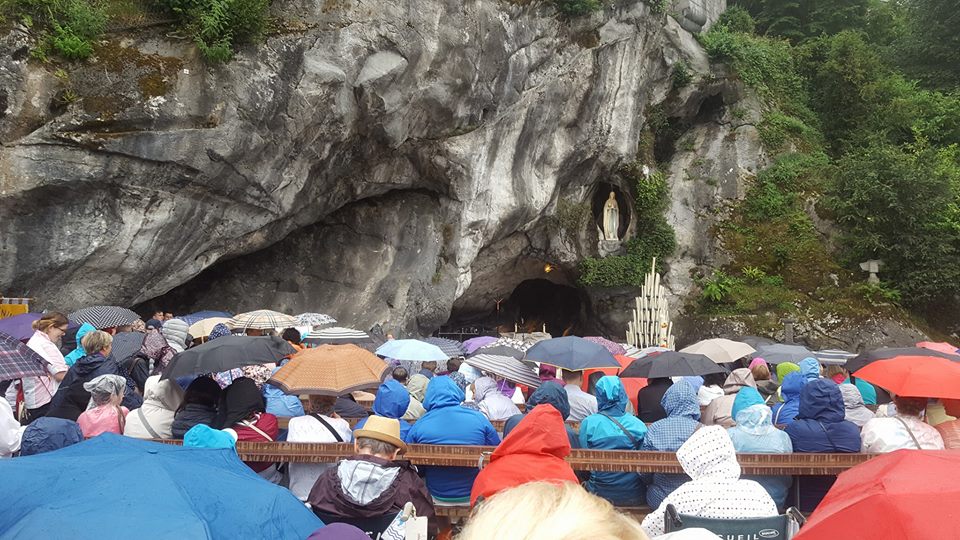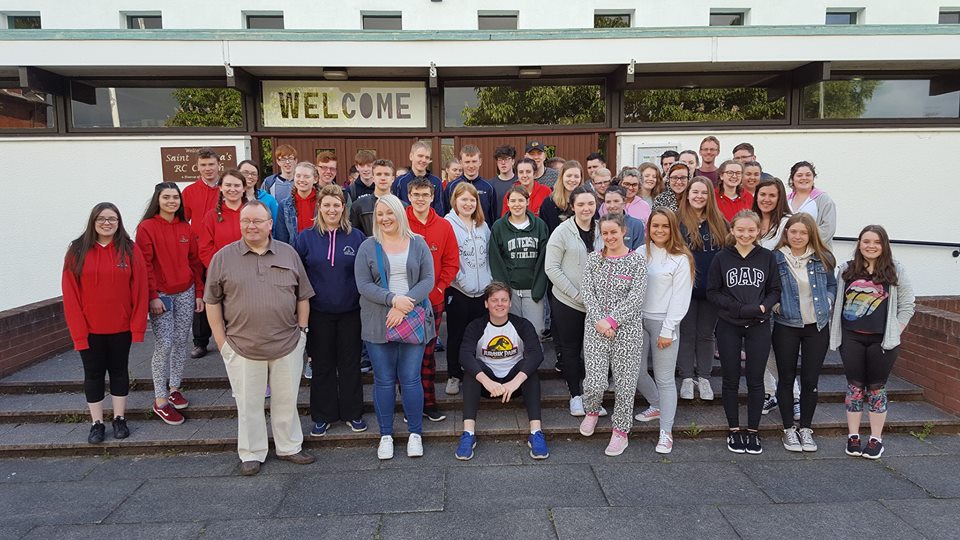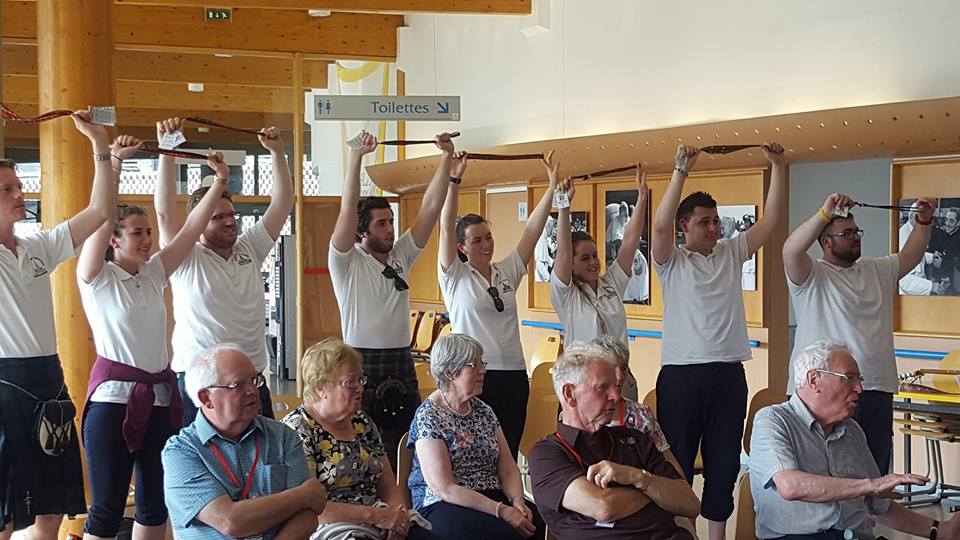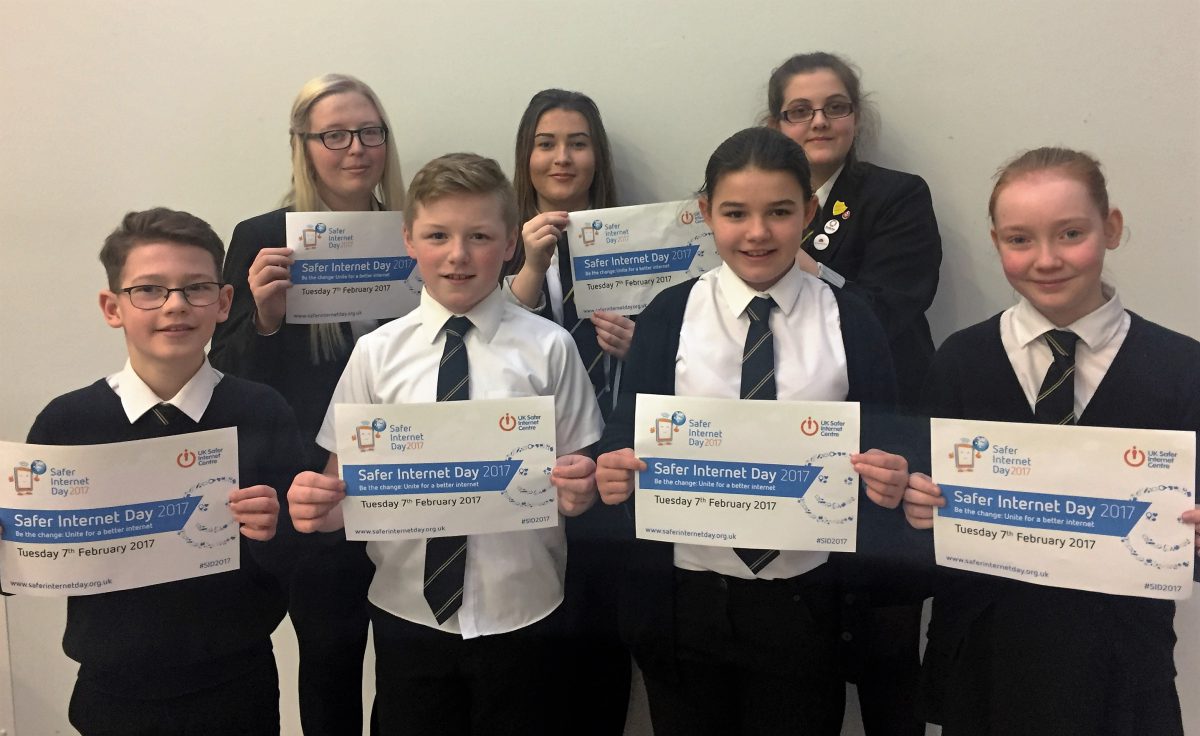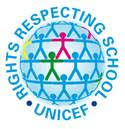A group of seniors from St. Matthew’s Academy were chosen to partake in a school exchange to Mzuzu, Malawi. The trip was amazing but seeing what happened afterwards in terms of fundraising, speeches and awards was unbelievable.

The pupils in Malawi
On the 23rd of November 2017, the Malawi partnership group organised a Bingo Night to help fund for the Malawian students to come to Scotland. The bingo night was a fantastic event with many prices being won, tickets being bought, and family and friends supporting the cause. In total, the Bingo Night raised over £300 which will help pay for them to visit Scotland as mentioned above.
We also found out that we won an award for our partnership with St. Peter’s Secondary in Mzuzu. This award was given to the school by the Scottish Malawi Partnership. The plague given can be seen in the prestigious award cabinet opposite the main office alongside many of the other awards the school has won.

Our hard-earned award!
As part-time of her leadership project, Zara Aird (S6), who went on the trip in July 2017, was responsible for the Christmas Parcel collection to send to out the two orphanages which we help fund- Mary Martha Orphanage and the Women’s Development Centre. We send in total 275 parcels- 200 were sent to Mary Martha and 75 to The Women’s Development Centre. This was an amazing success with pupils from S1 to S6 all donating pens, pencils, small toys and other gifts. This may sound very small to us but to the children in Malawi, this may be their only gift and it brings great joy and happiness. Seeing their smiling faces over the little things that we tend to take for granted, like a bouncy ball or a small plastic toy car, is a feeling no words can describe and for us as a school to do be doing such a thing is incredible.
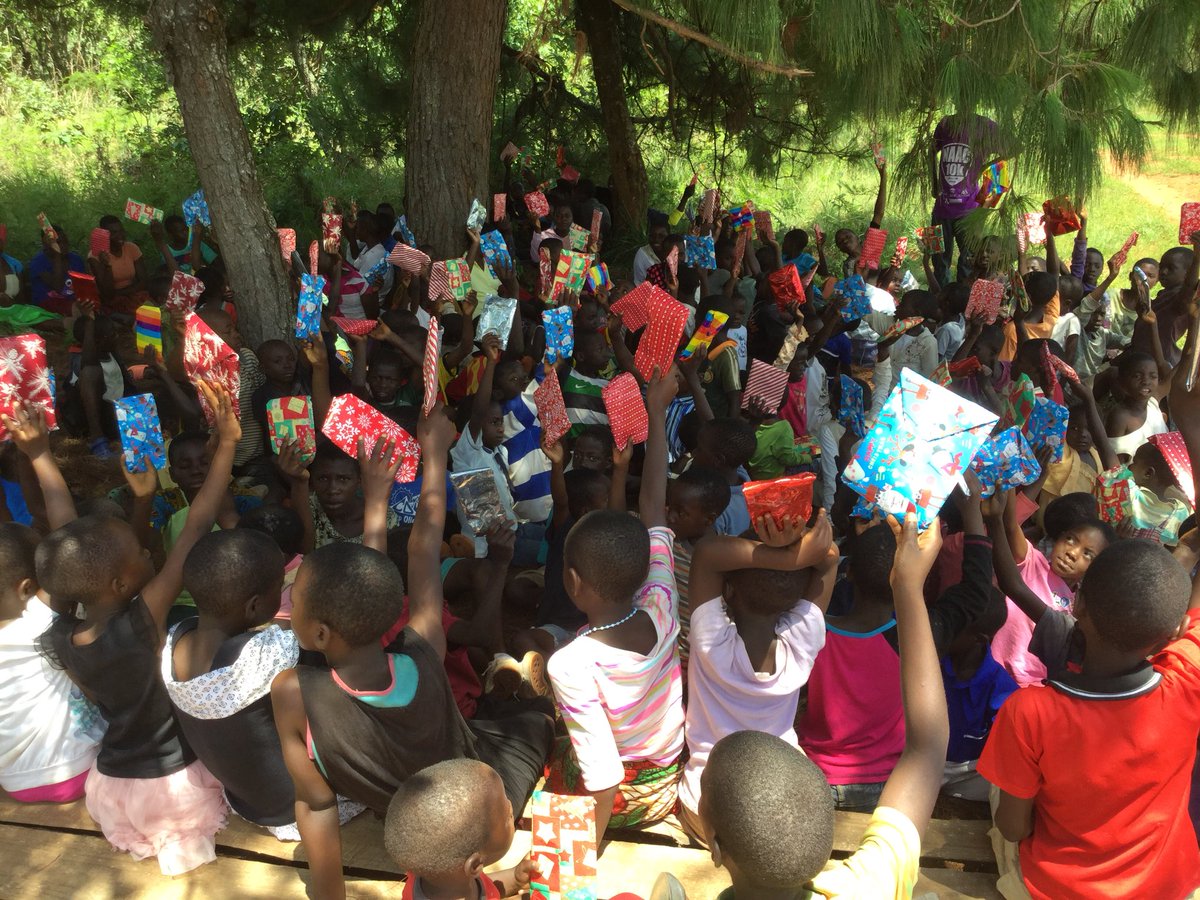
The children at Mary Martha receiving their Christmas parcels
For me, personally, I’m so thankful that St. Matthew’s Academy has a partnership with St. Peter’s Secondary School. It not only helps those who do not have the same luxuries that we do but gives us a deeper and clearer understanding of what they face and how we can help. The children in Malawi are always smiling even if they have very little and I think their positivity for their Catholic Faith and life is something that is truly admirable.
By Chloe O’Neill
What did our school do in Malawi?
Shannon Fitzsimmons, a sixth year, has kindly given us an account of her week in Mzuzu.
On the first day in Malawi, we were all introduced to our buddies from our partner school, St. Peter’s. Among the buddies I was glad to find out that my yearlong pen pal Mary was there, we only got to chat briefly on the first day as I had to talk to some of the other buddies too before we went to the Mary Martha Orphan Centre. There we were treated to a song and a play put on by some of the girls and even though I don’t know the name of the song they sang, I know it was stuck in my head for the rest of the trip. We handed out toothbrushes and balloons to everyone as well as leaving some other gifts before we had to leave. It was a valuable experience and I enjoyed seeing the kids so happy. At the end of the day, we all sat down and talked about the day. I was awarded the title of being last out of bed that day which I thought was funny and a very me thing to do.
On day two we had to be up for 7 and it was understandably difficult for me to wake up as I don’t even get up at that time for school. After me practically being a zombie during breakfast, I woke up in time for the mass, unlike our usual half an hour masses this mass lasted a lot longer (2 hours longer) and was much more upbeat than ours as there was a lot of dancing and energetic singing. After it was over we followed the procession which was interesting, but I had been sure I’d get burnt during it as my sunscreen had been in my lost case, but alas no I did not get burnt nor did I get a tan during the whole trip. We then got to see our buddies again as we visited the Mzuzu coffee den. I got the chance to talk to Mary and she is just as nice as in our letters, I also got the opportunity to talk to another one of our buddies who was super friendly and outgoing. Overall the day was relaxed, and I really enjoyed getting to talk to the buddies as well as experience the mass.
Day three was the day of the graduation mass which was incredible as it was so lively. I thought it was interesting that everyone sitting their exams got their exam equipment blessed. We then went to the St Peter’s church hall where we got to see the students perform this was amazing because they were very talented and there were some good singers. We were then invited on the stage to perform ‘The Flower of Scotland’ and I was glad that I wasn’t near a mic because, unlike some of the Malawians, I am not a good singer. My favourite part of the day was either teaching the students ceilidh dancing or being able to participate in their disco for a while. We taught some of the students how to do the Gay Gordon’s for which we had to choose a partner. I had originally been nervous about it, but the students were happy to take part which I thought was amazing. We then did ‘Loch Lomond’ which I had seen people in Scotland doing before but like the Malawian’s I, myself, had never taken part until that moment which was fun. After that, it was time for their disco which was much more energetic than the ones in Scotland as everyone was up dancing and a few people even managed to get me to take part. The entire day was amazing and was one of my favourites.
Day four was another day I really enjoyed. We had to be up for the half six mass which, like the ones in Scotland, lasted only half an hour with much more energy. I enjoyed it a lot more than I thought I would as it woke me up. We also got to experience classes in St Peter’s secondary school which I enjoyed as I got to talk to some of the students during the break while the teachers moved class. I appreciated that the students made both me and Chloe feel very welcomed in the class as it made it even more enjoyable. The lessons we sat through were English and science and it was interesting to see the differences between our lessons and theirs. We then were invited for a small lunch in the staff room where I discovered my love of Malawian tea – it was so nice! We then headed for a village where we were honoured to be invited into the chief’s house before they showed us how they make their food and where they used to get water from before having a water pump installed. I’m incredibly glad that they no longer must make the long walk down the steep hill where their previous source of water was as when we walked up and down it (without buckets of water to carry) I was terrified I was going to slip and fall. I was a good experience to see the village and I think it was an important thing to see. Plus, it was cool to have a shot of the water pump.
Day five was the day we got to visit the reserve with some of the students from St Peter’s. We all had to be ready for 6 am so we could prepare food before we went to the six thirty mass. The bus ride to the reserve was long and bumpy in places but I was just glad to be able to nap for a bit. When we arrived, we got to see elephants and hippos almost immediately and they were really close too. I’d never seen elephants or hippos in real life before, so I thought that it was cool. I also got to find out more about Mary which I enjoyed.
On day six we visited St Peter’s primary school where we all split into groups to teach the students about Scottish culture. I was in a group with Mr Cullinane and Chloe and we did a true or false quiz. We got a lot of questions about the Loch Ness Monster which was fun to talk about and the students seemed genuinely interested. We then split into two groups again while one group visited the local hospital and the other group – the one that I was a part of – visited St John of God’s psychiatric unit. We learned all about how they’ve made great progress in helping people with mental health problems and how substance abuse is common in Malawi. I thought the work they were doing to help the community was amazing.
For day seven we got to meet the Bishop of Mzuzu, Bishop John Ryan. He seemed very kind and I was glad to make his acquaintance. After that, we visited the primary schools, which I believe was very valuable to see. We split into two groups, with half going to the St Peter’s Primary and the other group – which I was a part of – going to the partner school of my old primary, Lunyangwa which is an all-girls school. I got the honour of handing over St Mark’s (my old primary school’s) pen pal letters as well as a few other things they had sent over which I was very happy to do. We then visited some classes and taught the kids how to sing ‘three craws’, ‘head shoulders knees and toes’ and ‘if you’re happy and you know it’. It was heart-warming to hear the children singing the songs as we left one of the classes. The experience was eye-opening as there were so many students in one class. We then visited Mary Martha’s where we got to give gifts and play with the children for a while which was fun. Some students also recited poems which I appreciated as it made the afternoon even better before we had to leave for Nakata Bay. I don’t know how much the other girls enjoyed the aesthetic of our dorm at Nakata, as you could see through the wooden floorboards and it was completely made of wood, but I loved it. I thought it was a wonderful experience and I won’t forget it. Plus, I was hyped to get the top bunk!
Day eight in Nakata Bay was interesting, I had been looking forward to a long lie but instead, I ended up still getting up early. The girls were the first awake, so we got breakfast first. We got to relax for a bit until everyone else woke up and then we headed out to the market. There were lots of shops, possibly 15, and I made sure to buy from each one. I ended up with a bunch of random objects ranging from a bag, necklaces, paintings and carvings. I got everything for a fair price and by the end, I had spent most of my remaining money. I even got customised keyrings, so I was very happy. We had some more time to relax by the water and enjoy the view before we had to leave. I enjoyed Nakata Bay a lot because it was cool.
On day 9, we got a ‘long’ lie before going to the 7 o’clock, English mass. The mass was relaxed and the singing was great as always. After it, we got to go to the Tumbuka mass for another few hours. This mass was livelier and even though we didn’t have a clue what was being said, the energy of the choir and everyone dancing kept it interesting. Near the end, while the announcements were being read, we got the opportunity to tell the everyone how thankful we were to have been warmly welcomed. We then got to relax for a bit before we saw our buddies for the last time. Unfortunately, I had to use my relaxation time to pack – if you call cramming things in a case with no order packing. I received Mary’s final letter in response to my previous one and we exchanged contact information so I can still be in contact with her now. Then we went for lunch in town and I regret playing it safe and only getting chips because the pizza was delicious. Finally, we had a social with the priests and other people who help out in the community. I got the opportunity to talk to Joseph, who helps with the Saint John of God, and Dominic who helps with the Saint Vincent de Paul. I got to learn about their SVDP and it was good to hear about what they are doing for the community and to see the differences in their work and our own at home.

Everyone enjoying their dinner.


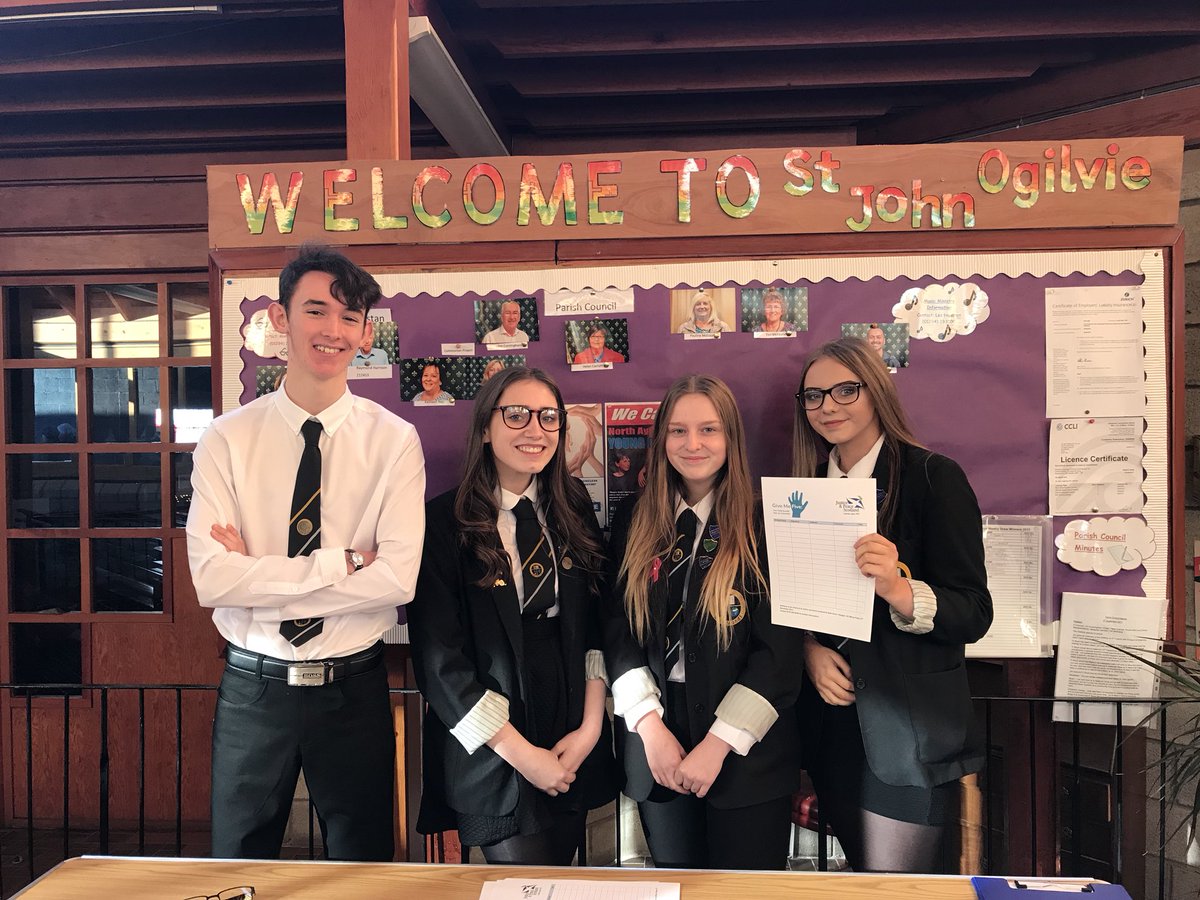
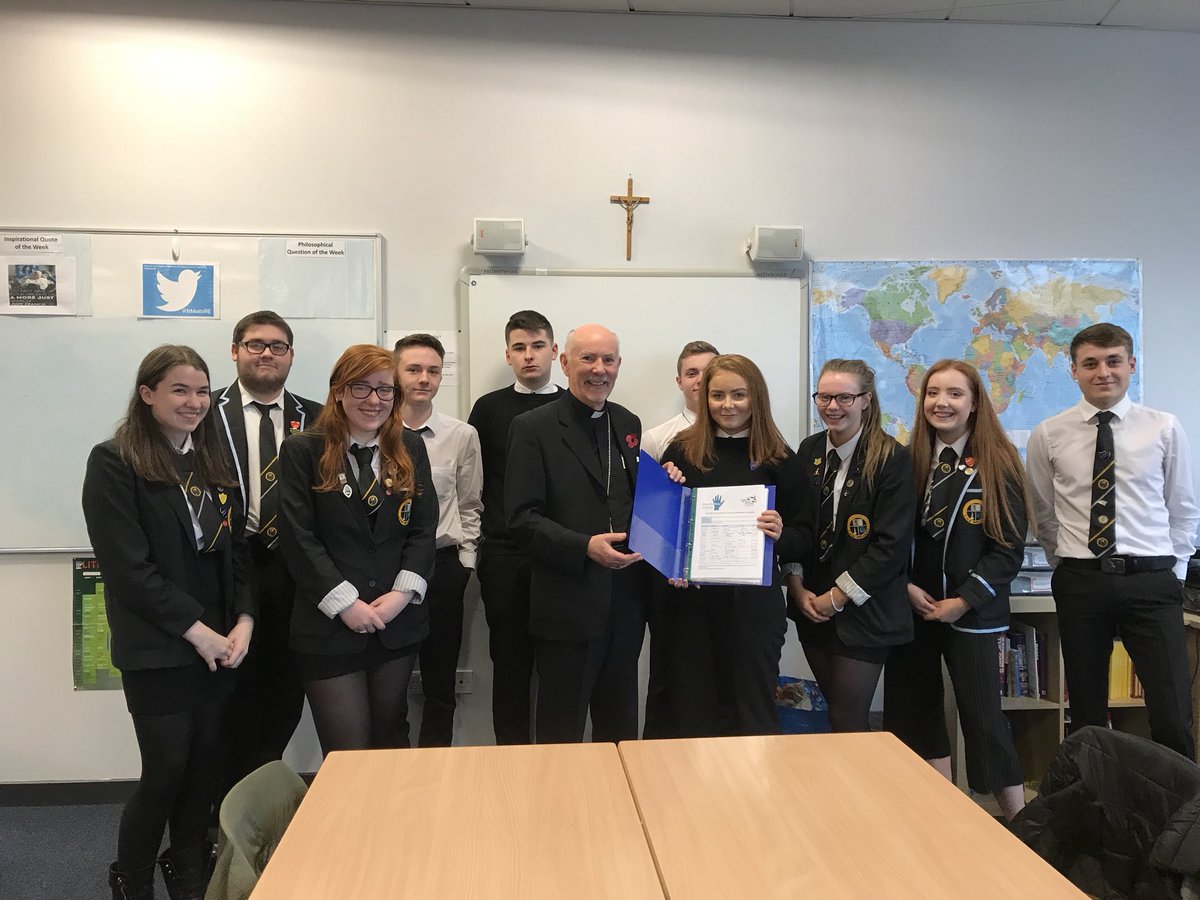




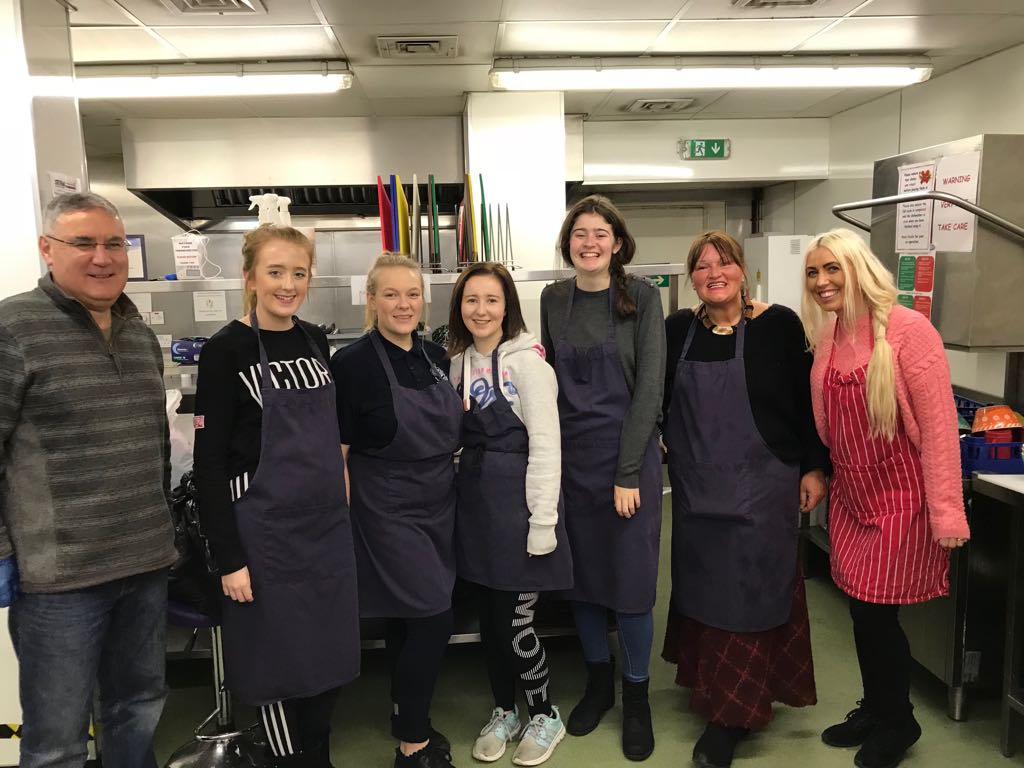 Heather, Rebecca, Maddison and Niamh at the Wayside Club
Heather, Rebecca, Maddison and Niamh at the Wayside Club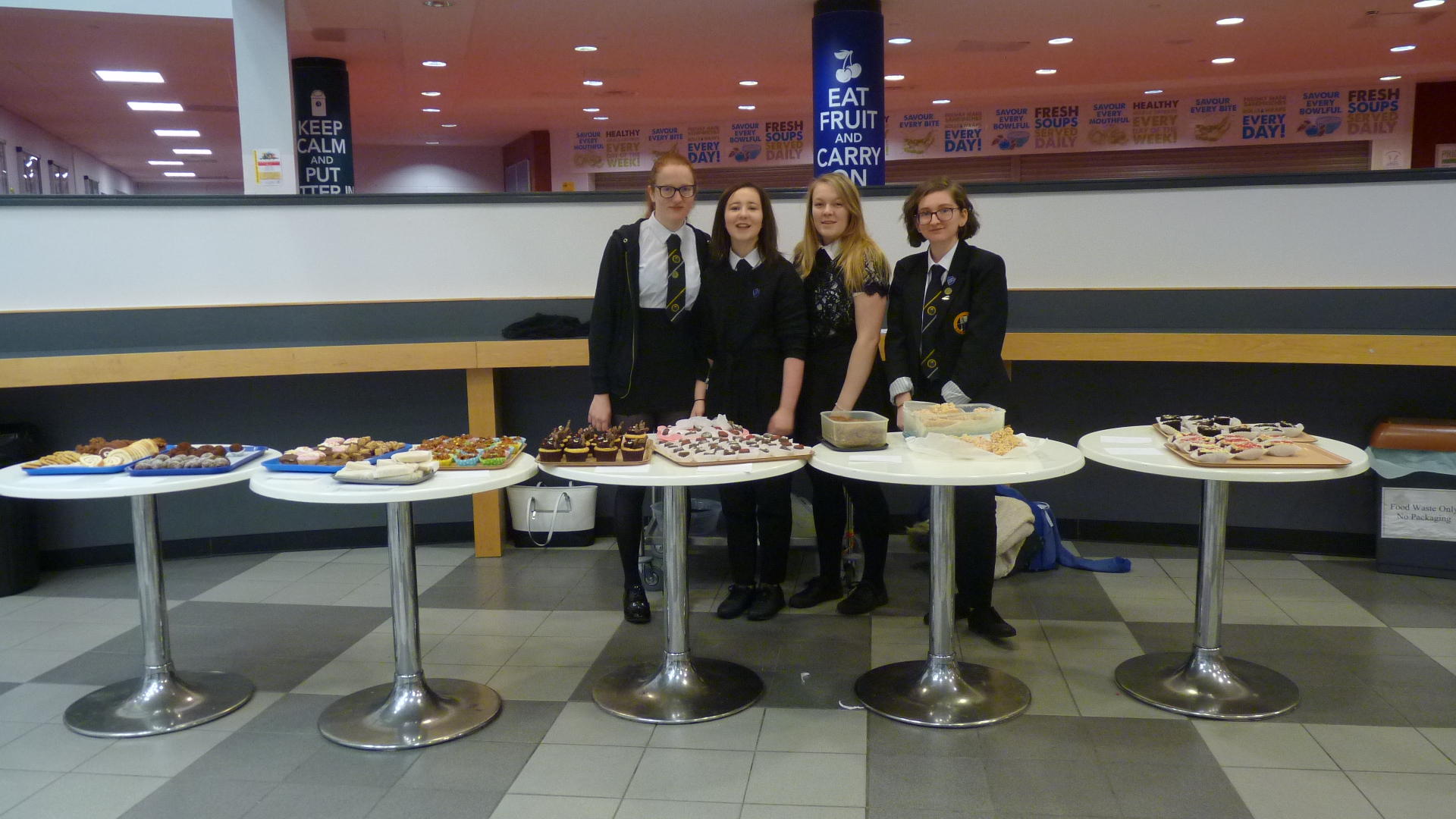 The girls before the bake sale!
The girls before the bake sale!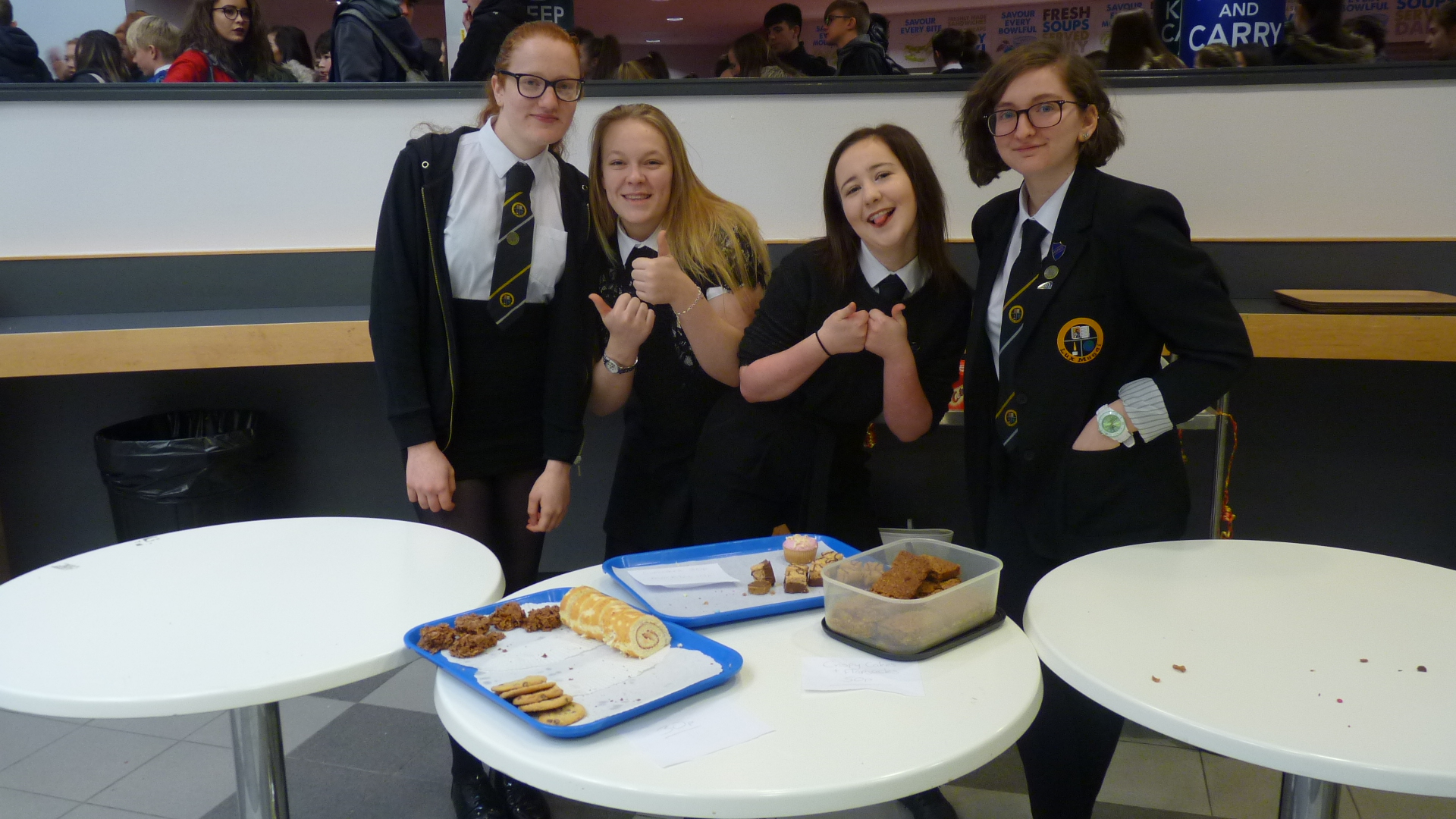 Barely anything left! What a successful bake sale!
Barely anything left! What a successful bake sale!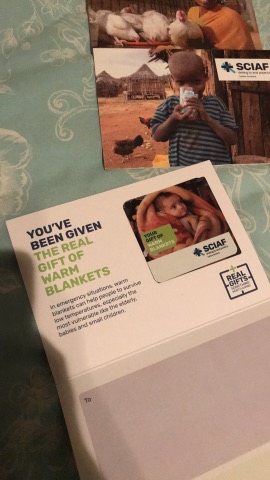
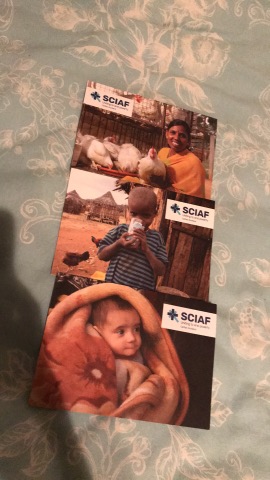
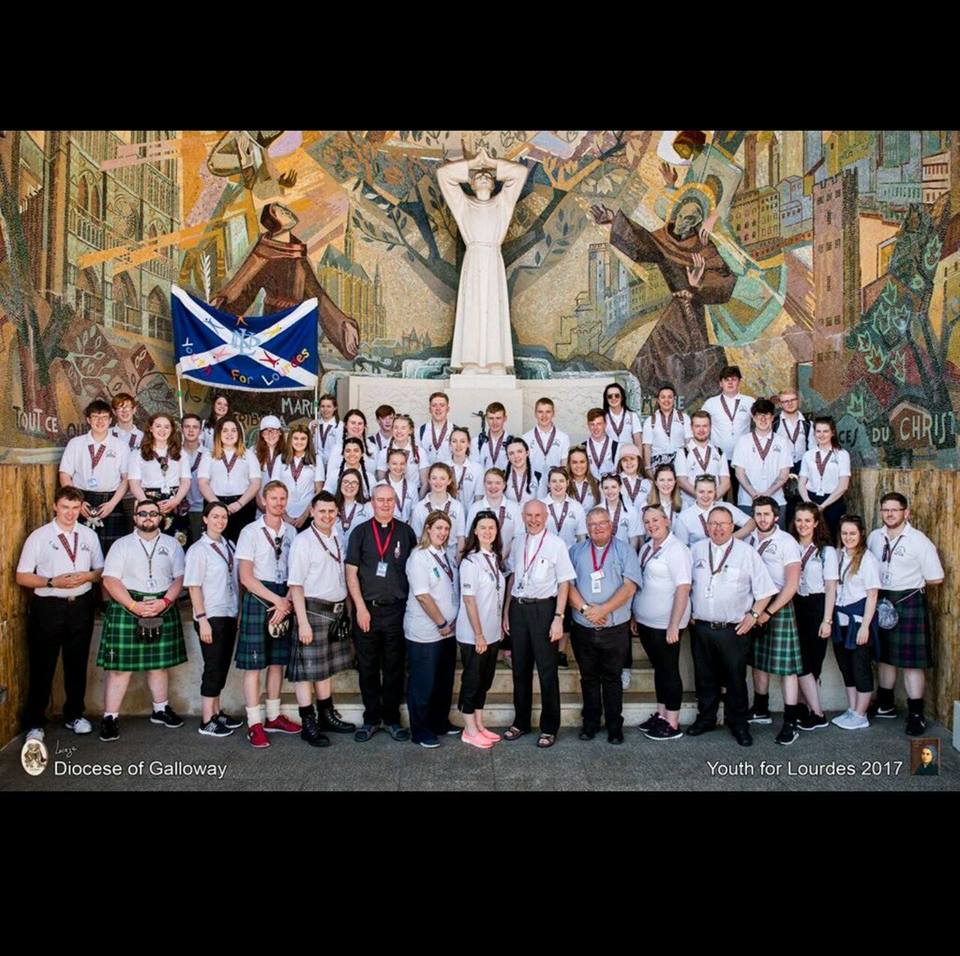 The official Youth for Lourdes photo for 2017.
The official Youth for Lourdes photo for 2017. Our blessing mass where we received our badges and uniform.
Our blessing mass where we received our badges and uniform.